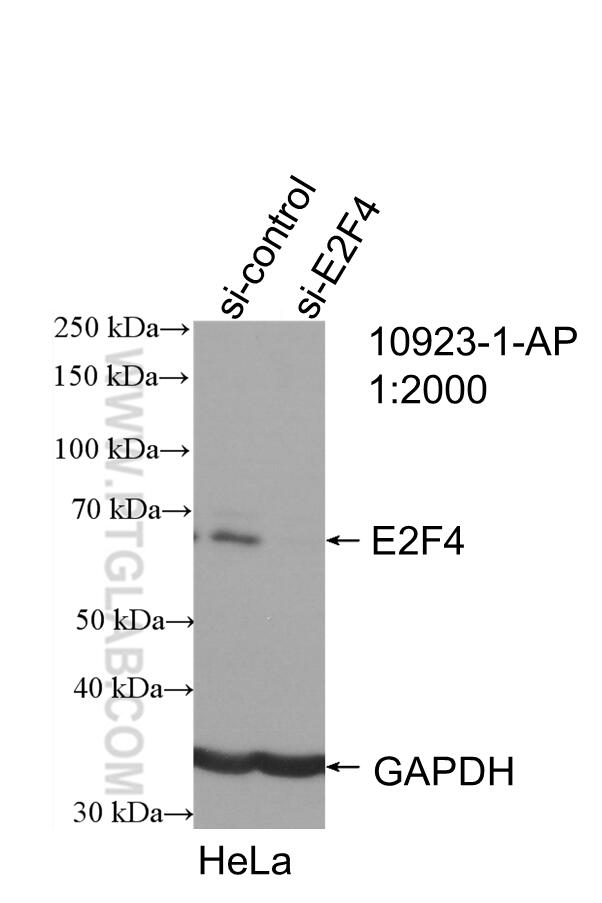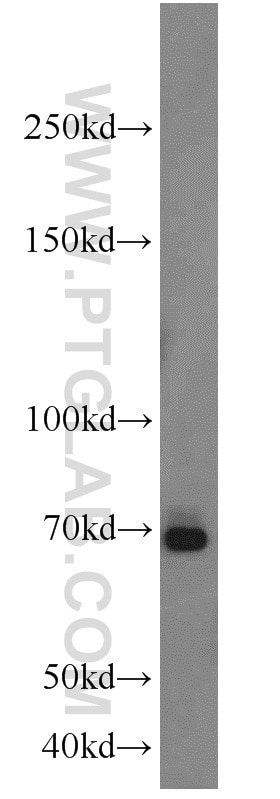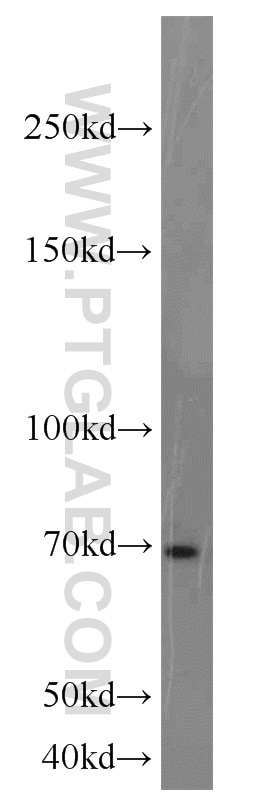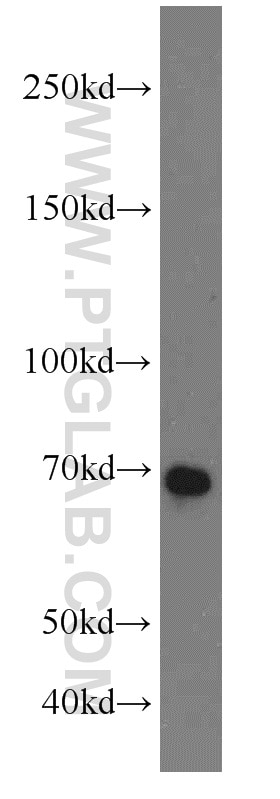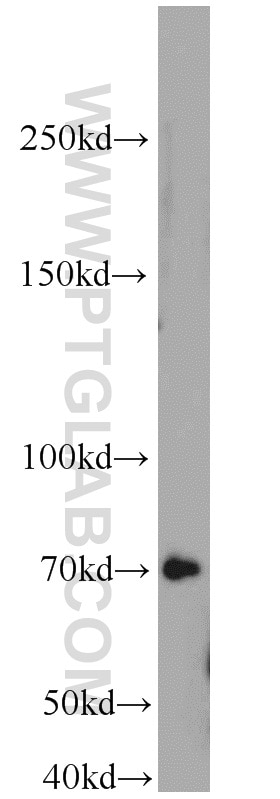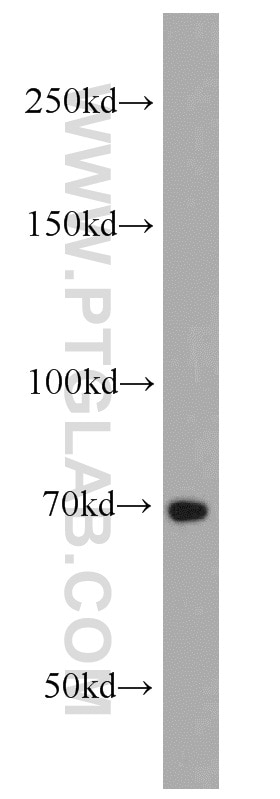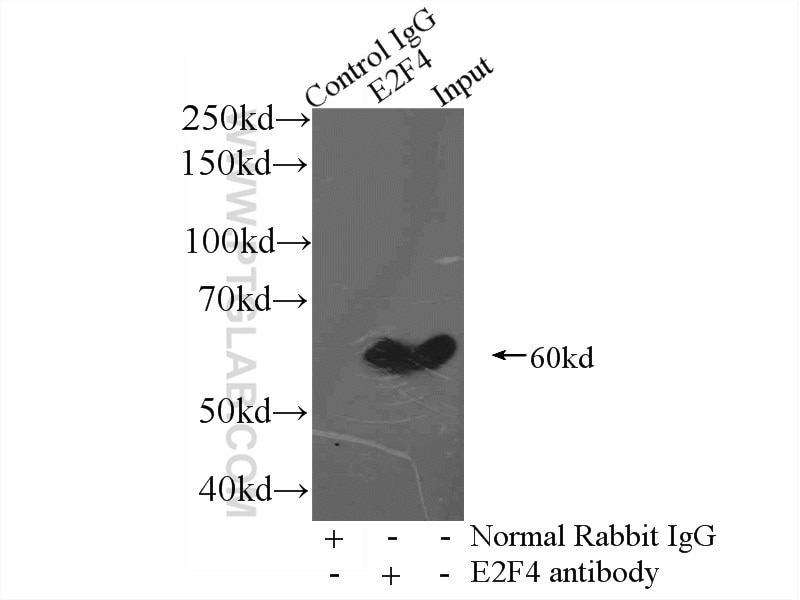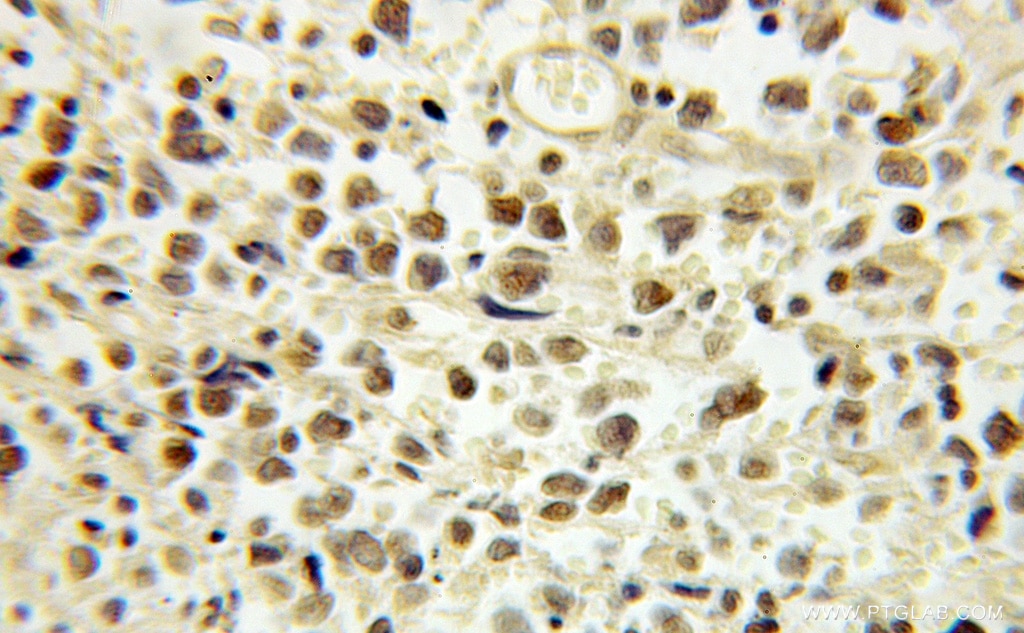Validation Data Gallery
Tested Applications
| Positive WB detected in | A431 cells, Jurkat cells, HL-60 cells, Raji cells, HeLa cells, NIH/3T3 cells |
| Positive IP detected in | mouse brain tissue |
| Positive IHC detected in | human lymphoma tissue Note: suggested antigen retrieval with TE buffer pH 9.0; (*) Alternatively, antigen retrieval may be performed with citrate buffer pH 6.0 |
Recommended dilution
| Application | Dilution |
|---|---|
| Western Blot (WB) | WB : 1:500-1:2000 |
| Immunoprecipitation (IP) | IP : 0.5-4.0 ug for 1.0-3.0 mg of total protein lysate |
| Immunohistochemistry (IHC) | IHC : 1:20-1:200 |
| It is recommended that this reagent should be titrated in each testing system to obtain optimal results. | |
| Sample-dependent, Check data in validation data gallery. | |
Published Applications
| KD/KO | See 2 publications below |
| WB | See 17 publications below |
| IHC | See 1 publications below |
| IF | See 2 publications below |
| IP | See 2 publications below |
| ChIP | See 2 publications below |
Product Information
10923-1-AP targets E2F4 in WB, IHC, IF, IP, ChIP, ELISA applications and shows reactivity with human, mouse, rat samples.
| Tested Reactivity | human, mouse, rat |
| Cited Reactivity | human, mouse, rabbit |
| Host / Isotype | Rabbit / IgG |
| Class | Polyclonal |
| Type | Antibody |
| Immunogen |
CatNo: Ag1365 Product name: Recombinant human E2F4 protein Source: e coli.-derived, PGEX-4T Tag: GST Domain: 1-413 aa of BC033180 Sequence: MAEAGPQAPPPPGTPSRHEKSLGLLTTKFVSLLQEAKDGVLDLKLAADTLAVRQKRRIYDITNVLEGIGLIEKKSKNSIQWKGVGPGCNTREIADKLIELKAEIEELQQREQELDQHKVWVQQSIRNVTEDVQNSCLAYVTHEDICRCFAGDTLLAIRAPSGTSLEVPIPEGLNGQKKYQIHLKSVSGPIEVLLVNKEAWSSPPVAVPVPPPEDLLQSPSAVSTPPPLPKPALAQSQEASRPNSPQLTPTAVPGSAEVQGMAGPAAEITVSGGPGTDSKDSGELSSLPLGPTTLDTRPLQSSALLDSSSSSSSSSSSSSNSNSSSSSGPNPSTSFEPIKADPTGVLELPKELSEIFDPTRECMSSELLEELMSSEVFAPLLRLSPPPGDHDYIYNLDESEGVCDLFDVPVLNL 相同性解析による交差性が予測される生物種 |
| Full Name | E2F transcription factor 4, p107/p130-binding |
| Calculated molecular weight | 44 kDa |
| Observed molecular weight | 60-70 kDa |
| GenBank accession number | BC033180 |
| Gene Symbol | E2F4 |
| Gene ID (NCBI) | 1874 |
| RRID | AB_2097096 |
| Conjugate | Unconjugated |
| Form | |
| Form | Liquid |
| Purification Method | Antigen affinity purification |
| UNIPROT ID | Q16254 |
| Storage Buffer | PBS with 0.02% sodium azide and 50% glycerol{{ptg:BufferTemp}}7.3 |
| Storage Conditions | Store at -20°C. Stable for one year after shipment. Aliquoting is unnecessary for -20oC storage. |
Background Information
Transcription factor E2F4 (E2F4) is a transcription activator that binds DNA cooperatively with DP proteins through the E2 recognition site 5'-TTTC[CG]CGC-3' found in the promoter region of a number of genes whose products are involved in cell cycle regulation or in DNA replication. The DRTF1/E2F complex functions in the control of cell-cycle progression from G1 to S phase. E2F-4 binds with high affinity to RBL1 and RBL2. In some instances, can also bind RB protein.The observed molecular weight of 60-70 kDa is the phosphorylation of E2F4 protein.
Protocols
| Product Specific Protocols | |
|---|---|
| IHC protocol for E2F4 antibody 10923-1-AP | Download protocol |
| IP protocol for E2F4 antibody 10923-1-AP | Download protocol |
| WB protocol for E2F4 antibody 10923-1-AP | Download protocol |
| Standard Protocols | |
|---|---|
| Click here to view our Standard Protocols |
Publications
| Species | Application | Title |
|---|---|---|
J Adv Res Transducin-like enhancer of split 3 protects against lipopolysaccharide-induced inflammation through DDX5-ATF1-PPP2R5A signaling | ||
Protein Cell Unveiling E2F4, TEAD1 and AP-1 as regulatory transcription factors of the replicative senescence program by multi-omics analysis. | ||
Ecotoxicol Environ Saf Proteomic analysis reveals that cigarette smoke exposure diminishes ovarian reserve in mice by disrupting the CREB1-mediated ovarian granulosa cell proliferation-apoptosis balance | ||
Oncogene Regulatory networks in mechanotransduction reveal key genes in promoting cancer cell stemness and proliferation. | ||
J Cell Physiol Stable overexpression of p130/E2F4 affects the multipotential abilities of bone-marrow-derived mesenchymal stem cells. | ||
PLoS One Non-steroidal anti-inflammatory drugs decrease E2F1 expression and inhibit cell growth in ovarian cancer cells. |

